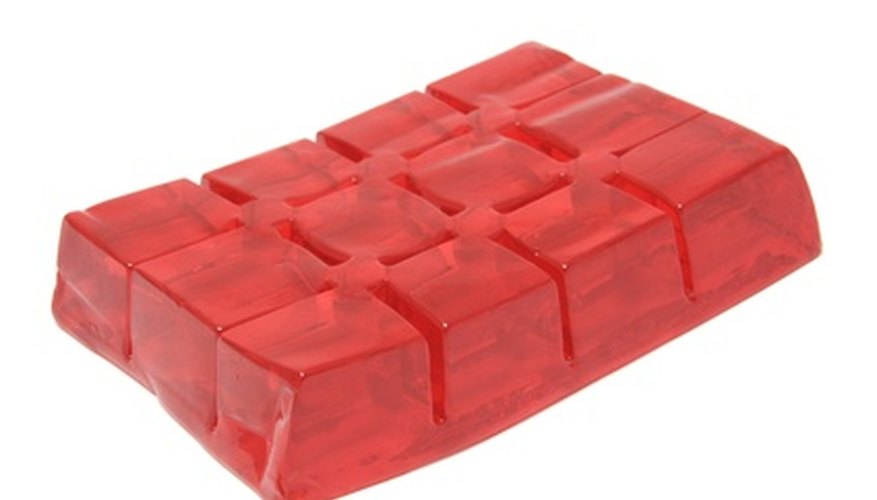Many fruits and vegetables produce pectin, a natural substance commonly used as a thickening agent in cooking. Pectin is available in both dry and liquid forms at most grocery stores or natural health stores. Various substitutes may be used instead of pectin when cooking. Note that different brands may have different gelling abilities, which may make substituting specific brands of pectin more difficult. If you wish to substitute other items for pectin when cooking, experiment to determine which substitutes work best for different recipes.
Liquid Pectin
To substitute liquid pectin for dry pectin, use two tbsp liquid pectin for every four tsp dry pectin.
Agar
Agar, made from seaweed, can act as a thickening agent and pectin substitute. Use agar as a substitute for pectin in recipes for jams, jellies or other thickening sauces or glazes. It is most commonly found in Asia and may be found in speciality grocery stores or gourmet food stores.
Gelatin
Gelatin is a common thickening agent and is usually in a powder form. Use gelatin as a substitute for pectin in jams or jellies. Other uses include meat or fruit preservation and the creation of taffy, fondant and marshmallow items, among other recipes. Most grocery stores and natural food stores sell gelatin.
- Gelatin is a common thickening agent and is usually in a powder form.
- Use gelatin as a substitute for pectin in jams or jellies.
Arrowroot Powder
Arrowroot powder is the ground product of the arrowroot plant. It is similar to cornstarch and can be an acceptable substitute for pectin. Use arrowroot powder when pectin is called for as a starching agent. Add arrowroot powder to a cool liquid (such as water) before adding to a recipe. Arrowroot powder is more difficult to find but is available at some speciality grocery stores or gourmet food stores.
- Arrowroot powder is the ground product of the arrowroot plant.
- Use arrowroot powder when pectin is called for as a starching agent.
Tapioca
Tapioca, created from the yucca plant, is most commonly used as a thickener for desserts and may be used as a substitute for pectin. It can be found in most grocery stores or natural food stores.
